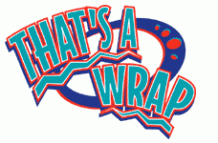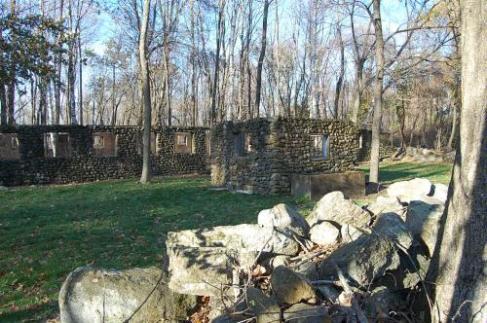Month: December 2013
Wrapping Up the Course– Opening Up the Future
I suppose the better question would be, what haven’t I learned in this course? That would make a response much more challenging. This course helped me evolve my ideas, methods, writing practices, and theories. The way I view history is now much more complicated. It’s embarrassing to admit that I didn’t actually realize just how many aspects one has to consider when researching. My view of research and topics was very black and white before this course. I now realize that there is so much more than who, what, when, where and why. There are so many factors that contribute to the outcomes of events, the feelings of cultures, and the actions of people. In particular, the quantitative and qualitative lesson was extremely eye opening. I honestly had never heard of or considered those types of history. While it may take me a long time to learn, I would love to use it as much as I could in the future! It really helps with the comparison and contrast of different elements surrender one particular topic. In my opinion, these methods could be used at the beginning of researching a topic, solely to get an idea of what categories one could focus on to most effectively argue their idea. Also, the idea of what a tertiary source really is has helped me immensely. No longer will I ever look at a book as a primary source. I have come to realize that a primary source is very few and far between. This has helped me look at documents, books, and online archives so much differently. Honestly, so much has changed for me after taking this course. I was going to say the one thing that hasn’t changed is my appreciation for history, but even that has changed. My curiosity and appreciation has increased so much! This course helped broaded my horizons and helped me put history into perspective. The lessons we learned will help me in the future, for writing papers, doing research, using Chicago style format, and even my practices for when I become a teacher.
–Thank you again for a wonderful semester!
Do You Have What It Takes to be Public History?
Public history ranges from memorials, to museums, to libraries, to historic homes (mount Vernon), and in the modern day to online archives. Public history offers a ton of information about ones town, city, state and how it affected others. Public history in the most literal sense, is everywhere. Public history could even be the oldest tree in your local park with hundreds of names carved onto it. While that may be considered public history in general, it is not the type of public history that is chosen to be in museums because perhaps, it is not deemed the most important.
Public history memorials and museums are generally dedicated
to the large world events and how the town, city or state played a role. For example, a memorial dedicated to those of the town who lost their lives in the Vietnam or Korean War.
In my personal opinion, believe that the recognition of public history depends on how “in-tact”, well known, or still present the site is. For example, would Lucy Stone’s historical site be recognized if her house had completely burned to the ground? Her site, located in West Brookfield, MA, shows what very little is left of her home after a brutal fire took it down. All that is left is the stone foundation and walls. If there was nothing to show, how could we be certain that this historical event would have even been remembered throughout the years? Or if there weren’t anything left, would the town have even invested money into in to establish a sign for it? With that being said, I think that first and foremost, public history is more of a location than a method.
My point is that there is probably a plethora of public history that we do not know about because it could not be deemed important enough, or could not have a still standing landmark. I see myself as a public historian in the sense that because I study history, it is my job to discover these unnoticed public histories as I conduct my research. Perhaps I am a public historian when I give my opinion or find continuity in something historical. I suppose I will be an official public historian when I am a teacher. Then I will have more of a voice and input into society. Public history does a wonderful duty by bringing to life the history of individual places, however it challenges how history is told because the events chosen have to be “important enough” to be recognized and invested in.
Side Note: The picture above is of Lucy Stone’s home today.
Letters: Sources for my Second Paper
For my second paper, I chose to analyze letters from the Great Depression. I chose letters because they displayed the rawest emotion from the time. For example, I used two letters from average citizens. One was addressed to Eleanor Roosevelt, and the other to President Franklin Roosevelt. Both letters were asking for assistance because they couldn’t afford their homes or new clothing anymore. Using these letters to showcase the Great Depression had its pro’s and con’s. They were effective to use because they represented the struggle across the nation. However, they could have been ineffective because not everyone was struggling, in that here were still wealthier people who were able to not lose everything. While those people may have been far a few between, it is not appropriate to count them out of history. Their presence in the great depression was just as important. It could have been these people who created various jobs, helped familes survive, or were just plain greedy in such a time of need. Now that I think about it, I think it would have been beneficial to find a letter written by one of these wealthier type citizens. Just to compare and contrast the different sides of the depression. I believe that every type of source will provide someone with different and helpful research material about a topic. For example, If I had used maps, I may have been able to show the parts of the country most affected or least affected. I could have used quantitative history to show percentages of people in cities that were poor and unemployed etc. The neatest part about history is that we have so many sources to choose from, and you can always use them in different ways.
Don’t Take Their Word For It: Aural Sources
 Aural sources of history are just as valuable as a book. I can confidently say this because I have come to the realization that all sources in history pose a challenge. No matter what source one attempts to use, there are tons of different aspects to take into account before using it. For example, bias, culture, personal history, personality etc. Aural sources aren’t anymore challenging than reading a book. However, it could be argued that having the advantage of listening to their tone could help get a better understanding of their true feelings. Aural sources are just as unconventional as all sources. They have to be taken with a grain of salt, and they have to be thoroughly analyzed. One could use aural sources to gain a more personal insight into history. Some history books can be very broad, but aural sources, especially music can help one get more familiar with true emotions of the event. I would use these sources for research on specific events. Topics that come out of these sources could be, economy, culture, criminal justice systems, police brutality, themes of protest, etc. Depending on the aural source itself, many more topics could be discovered. When using aural sources, one should consider questions such as…
Aural sources of history are just as valuable as a book. I can confidently say this because I have come to the realization that all sources in history pose a challenge. No matter what source one attempts to use, there are tons of different aspects to take into account before using it. For example, bias, culture, personal history, personality etc. Aural sources aren’t anymore challenging than reading a book. However, it could be argued that having the advantage of listening to their tone could help get a better understanding of their true feelings. Aural sources are just as unconventional as all sources. They have to be taken with a grain of salt, and they have to be thoroughly analyzed. One could use aural sources to gain a more personal insight into history. Some history books can be very broad, but aural sources, especially music can help one get more familiar with true emotions of the event. I would use these sources for research on specific events. Topics that come out of these sources could be, economy, culture, criminal justice systems, police brutality, themes of protest, etc. Depending on the aural source itself, many more topics could be discovered. When using aural sources, one should consider questions such as…
1.) What year was this recorded?
2.) What is the source talking about?
3.) What is the general history of this event?
4.) How does the general history compare to the source?
5.) Can you detect bias?
6.) What is the tone of the voice/lyrics?
7.) How does it compare to other aural sources about this event?
Aural sources are a great source to use when researching a specific event in time. However, be leery of taking their word for it. Not always, and almost never is an aural source the 100% accurate truth about the event.


